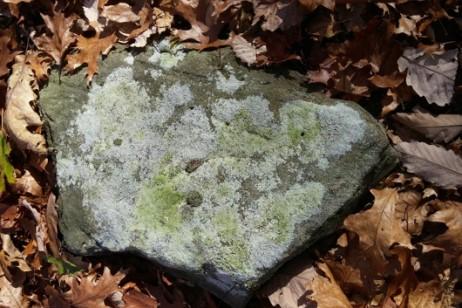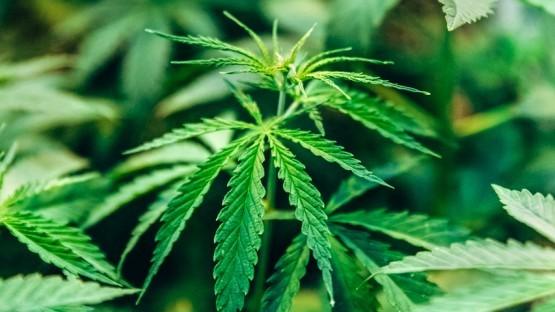Page 5
Warren County Connection
Lichen in the Garden By Dianne Machesney, Master Gardener , Allegheny County, PennState Extension
Crustose lichen on stone. Photo credit: Dianne Machesney
What's that growing on my tree trunk? Is it harming my tree? Don't panic. Chances are it is a lichen. Since 1867, scientists have recognized that lichens are symbiotically associated with fungi and protists (bluegreen alga.) The fungus provides a physical structure and offers its partner protection from the environment. The algae, which is slimy and has no structure, provides the food through photosynthesis. It converts energy from the sun and carbon dioxide into sugars. The carbohydrates in this food help produce new growth, called the thallus, which looks different than the two hosts. In 2016, scientists at Purdue University uncovered a third partner, yeast. The yeast enables the lichen to produce acid that helps defend it against invasion from other microbes. Lichens are located on every continent on earth, in every climate and altitude. They only require an undisturbed surface, time, and clean air. Lichens are very sensitive to air pollution. They are rarely found in urban areas. Finding lichen in your garden means that your environment is clean enough to support them. A good thing! Lichens grow on any undisturbed surface--bark, wood, mosses, rock, soil, peat, glass, metal, plastic, and even cloth. Lichens have their favorite places to grow. For instance, a lichen that grows on bark will rarely be found on stone. Lichens can absorb water through any part of their thalli and have no need of roots. Lichens do not damage plants or rob the bark of moisture. They do not parasitize living plant cells, and studies
show that there is no association with pathogens entering plant tissue and causing disease. With more than 3,600 species in North America, lichens are beautiful, diverse, and ecologically important. They help the environment by reestablishing life on rock and undisturbed sites. As lichens colonize, they trap dust, which plays a role in soil formation. Lichens contribute to the nitrogen cycle by converting the nitrogen in the air into nitrates that help in their growth and development. Their ability to fix atmospheric nitrogen is beneficial to other plant life as well. Rain leaches nitrogen from both living and dead lichens and makes it available to plants in the immediate area. When lichens die, they contribute to decayed organic matter, which enables mosses and seeds to begin developing among the pockets of new soil. Lichens are not especially tasty and few of them are poisonous. They have been used as food in numerous cultures, as medicine and as a dye. Animals use lichens for food, and shelter too. They are the basic sustenance of caribou. Around 50 species of birds regularly use fruticose lichens as their preferred nesting material. Lichens are diverse. They can be green smudges on a rock, orange, yellow, or white patches the size of your palm, or draping gossamer. They are not a moss. The misnamed reindeer moss is actually a lichen. There are three main body types—foliose, fruticose, and crustose. Foliose lichens produce leaf-like flattened, lobed thallus. They are commonly found growing on tree trunks. Fruticose lichens grow erect and have visible fruiting bodies. Crustose lichens form a crust over their host; some of these are brightly colored. Lichens do no damage to tress and should not be removed. But they should be removed from garden statues or sculptures because they can penetrate and damage the stone. Scraping does not remove the entire thallus, so use sprays containing copper salts to control lichen growth. (Continued from page 9)
overboard to include those who may behave in a way that will cause you to regret the invitation. It is possible to extend kindness to someone with whom you disagree, especially if the situation is for the good of the children. When making your decisions, take into consideration any negative aspects, and base your choice on whether the children will benefit from the visit, social gathering, or other activity. Weigh the positives and negatives and do what is best for them.




